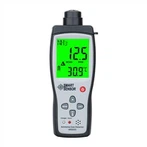The method of welding wires with an electric soldering iron
Before using a new soldering iron, use fine sandpaper to polish the soldering iron tip, heat it with electricity, dip it in rosin, and then contact the soldering wire with the edge of the soldering iron tip to evenly coat the soldering iron tip with a layer of tin. This can facilitate welding and prevent surface oxidation of the soldering iron head. If the old soldering iron tip is severely oxidized and turns black, the surface oxide can be removed with a steel file to expose its metallic luster, and then re tinned before use
The electric soldering iron should be powered by a 220V AC power supply, and special attention should be paid to safety when using it. The following points should be taken seriously:
(1) It is best to use a three pole plug for the soldering iron plug. Ensure proper grounding of the casing.
(2) Before use, carefully check the power plug and power cord for damage. And check if the soldering iron head is loose.
(3) When using an electric soldering iron, do not use force to strike it. To prevent falling. When there is too much solder on the soldering iron head, it can be wiped off with a cloth. Do not throw it randomly to prevent scalding others.
(4) During the welding process, the soldering iron should not be placed randomly. When not soldering, it should be placed on the soldering iron holder. Be careful not to place the power cord on the soldering iron head to prevent accidents caused by scalding the insulation layer.
(5) After use, the power should be cut off in a timely manner and the power plug should be unplugged. After cooling, retrieve the soldering iron from the toolbox.
2. Solder and flux
When welding, solder and flux are also required.
(1) Soldering: Soldering electronic components, usually using solder wire with rosin core. This type of soldering wire has a low melting point and contains rosin flux, making it extremely convenient to use.
(2) Flux: The commonly used flux is rosin or rosin perfume (dissolved in alcohol). Using flux can help remove oxides from the metal surface, facilitate welding, and protect the soldering iron tip. When welding larger components or wires, solder paste can also be used. But it has a certain degree of corrosiveness, and residues should be promptly removed after welding.
3. Auxiliary tools
For the convenience of welding operations, pointed nose pliers, offset pliers, tweezers, and small knives are often used as auxiliary tools. You should learn to use these tools correctly.
Pointed nose pliers, offset pliers, tweezers, and small knife






